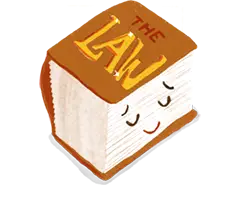Topic
Starting a business
This page contains different parts of laws about Starting a business, within the topic of Business.

Important laws about Starting a business
Financial Service Providers (Registration and Dispute Resolution) Act 2008
The Registrar can say no to papers that don't follow the rules
30: Registrar may refuse to accept document
Real Estate Agents Act 2008
How to apply for a real estate licence
38: Application for licence
Real Estate Agents Act 2008
Tell people you are applying for a licence
39: Applicant must advertise application
Real Estate Agents Act 2008
A special licence to help run a real estate business for a short time.
62: Temporary licence
Limited Partnerships Act 2008
This law sets rules for a new type of business partnership in New Zealand.
3: Purpose of Act
Limited Partnerships Act 2008
What special words mean in the Limited Partnerships Act 2008
4: Interpretation
Limited Partnerships Act 2008
The government must follow this law like everyone else.
5: Act binds the Crown
Limited Partnerships Act 2008
What is a limited partnership and how to set one up
6: What is limited partnership
Limited Partnerships Act 2008
How a limited partnership is created and ends
7: Formation and duration of limited partnership
Limited Partnerships Act 2008
Rules for starting a limited partnership in New Zealand
8: Requirements for limited partnership
Limited Partnerships Act 2008
A limited partnership's rules, which all partners must agree to and follow.
9: Partnership agreement
More laws about Starting a business
About this project
What is this project?
This project is an experiment to take difficult language, and make it easier to read and understand for everyone.
How do we do this?
What's our process for taking the law and turning it into plain language?
Why is the law written like it is?
Laws are often hard to read. They use a lot of words and language we don't usually use when we talk.
Should we use AI for this?
What are the good and bad sides of using AI?
Is this information the actual law?
We hope that this information will help people understand New Zealand laws. But we think that it's important you talk to someone who understands the law well if you have questions or are worried about something.
You can talk to Community Law or Citizen's Advice Bureau about your rights.
Remember that AI can make mistakes, and just reading the law isn't enough to understand how it could be used in court.
You can talk to Community Law or Citizen's Advice Bureau about your rights.
Remember that AI can make mistakes, and just reading the law isn't enough to understand how it could be used in court.




